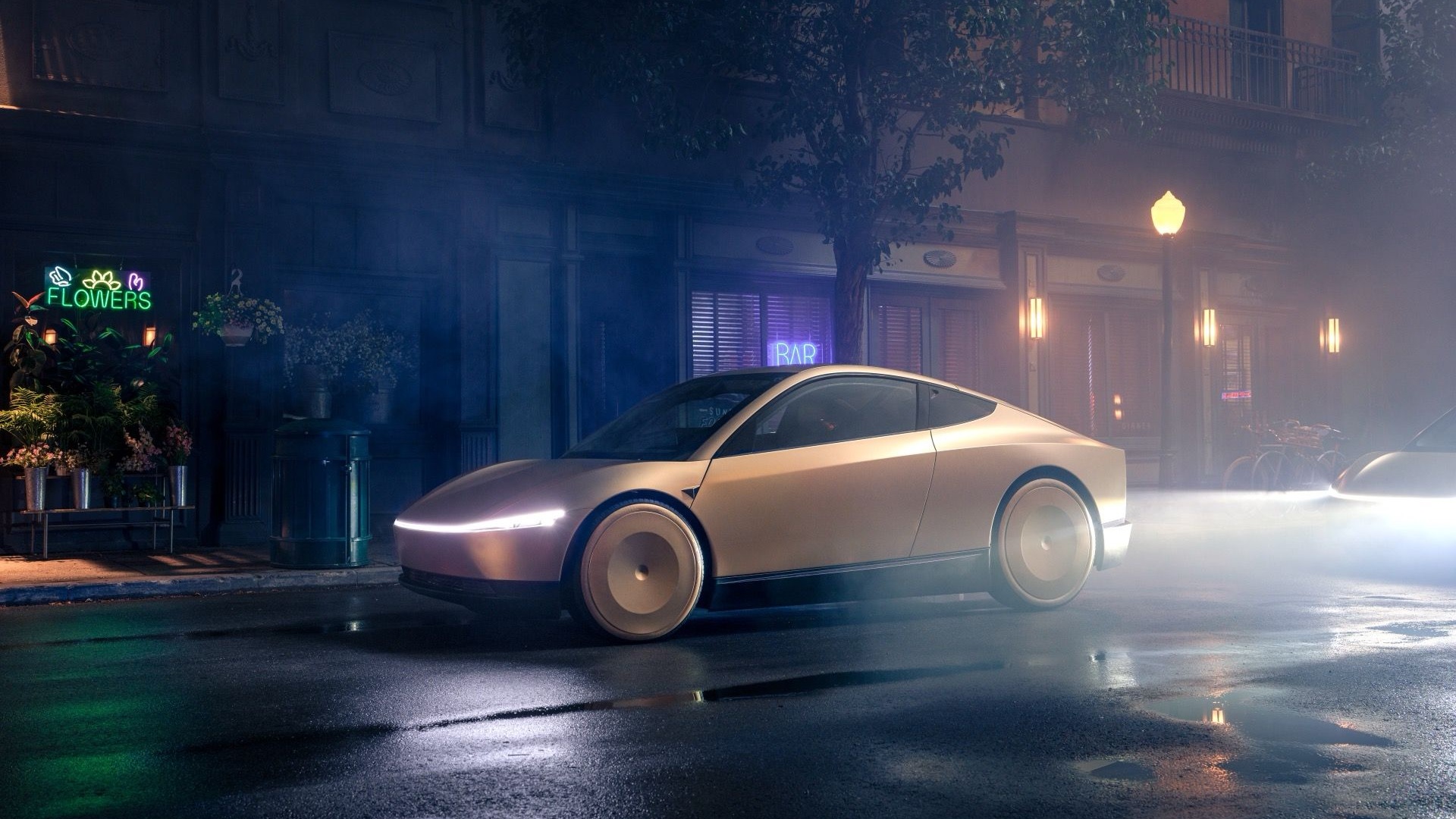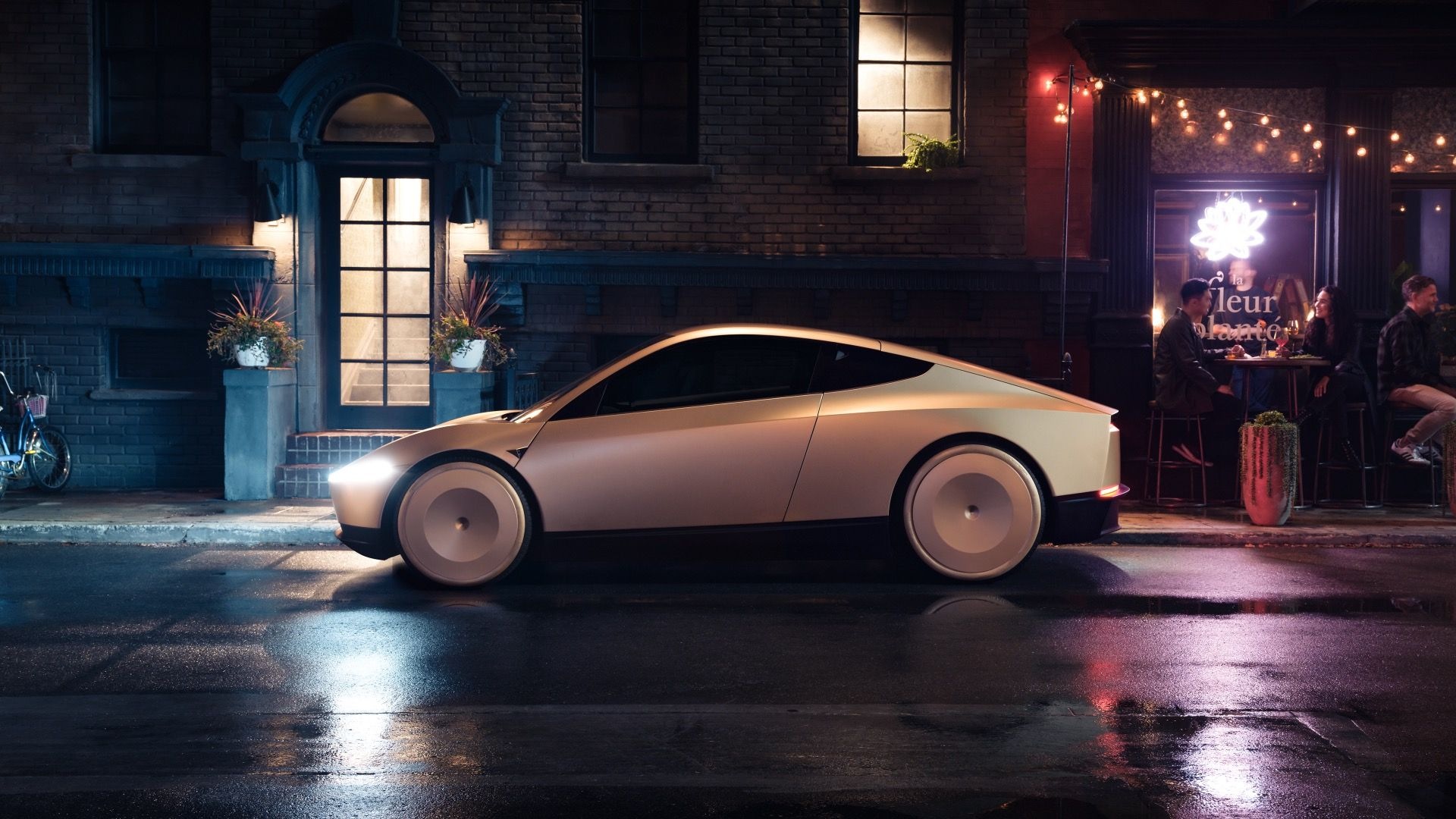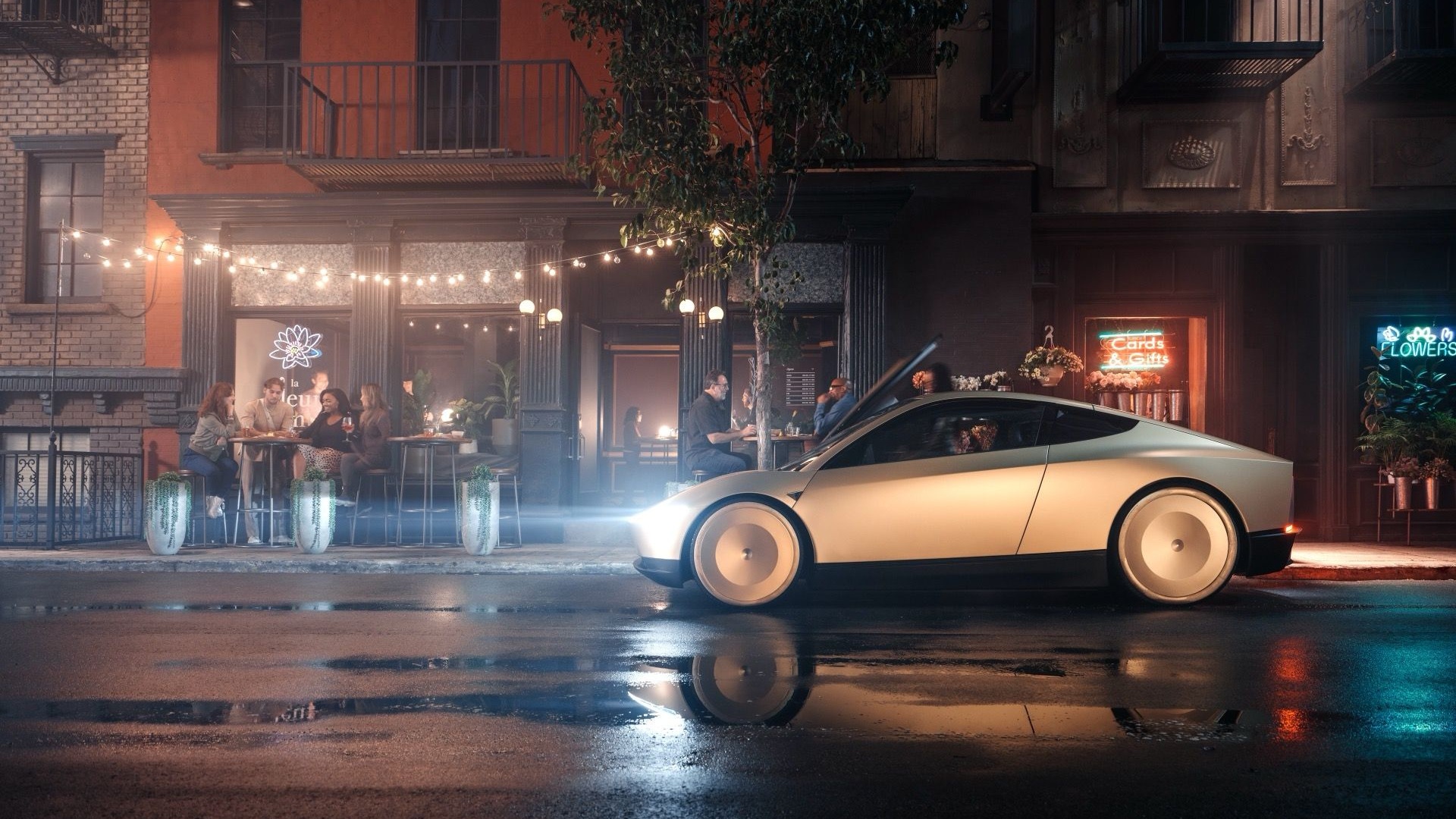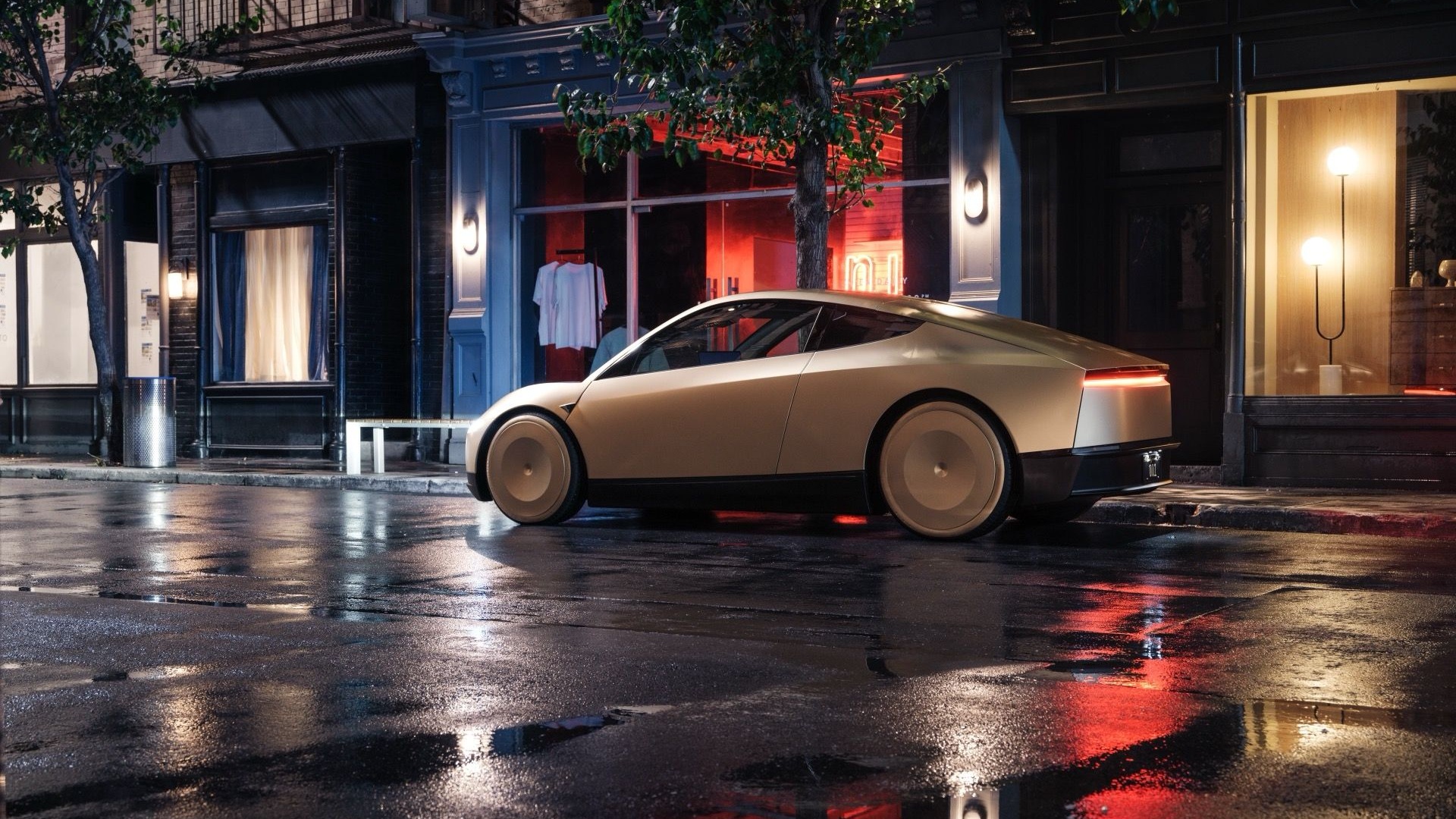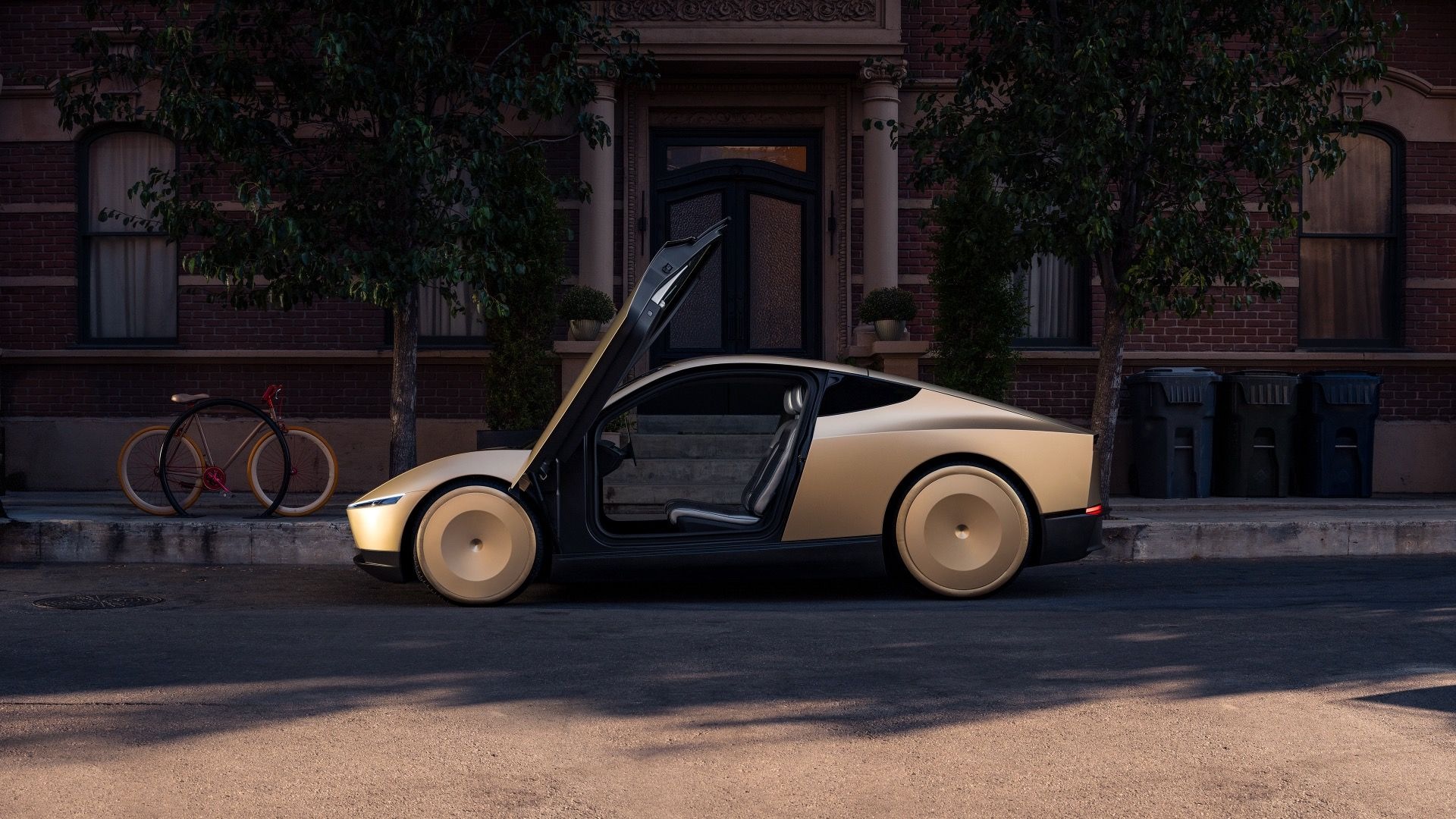- Tesla reveals Cybercab and Robovan robotaxis
- Cybercab production targeted to start in 2026
- Cybercab pricing targeted to start below $30,000
Tesla late on Thursday unveiled its long-awaited robotaxi, which the company dubs the Cybercab.
The debut took place on the closed-off lot of Warner Bros. studio in Burbank, California, and included a surprise debut of a van counterpart called the Robovan.
Both self-driving vehicles are devoid of a steering wheel and pedals, and Tesla CEO Elon Musk said at the reveal that both are destined for production with no changes to the vehicle designs planned.
In his typical style, Musk was short on details, but he did say the Cybercab, a sleek, two-door hatchback, is targeted to start production in 2026, and come with a price tag of less than $30,000.
Robotaxi pic.twitter.com/zVJ9v9yXNr
— Tesla (@Tesla) October 11, 2024
The Cybercab will be aimed at both private and fleet buyers, and according to Musk, the cost of traveling a mile for owners, long term, could drop to around 20 cents per mile per person, though he didn't breakdown that cost.
With the Robovan, Musk said the cost per mile could eventually drop as low as 5-10 cents per person, as the vehicle can transport up to 20 people.
Tesla also showed a video where the vehicles can charge autonomously using inductive charging, and even get their interiors cleaned via an autonomous cleaning station. And Musk said the technology being developed for the robotaxis can be transferred to Tesla's planned humanoid helper robot known as Optimus. Tesla had Optimus prototypes at the event serving drinks to attendees.

Tesla Robovan
Tesla has been promising since as early as 2016 that Tesla owners would eventually be able to rent out their EVs as robotaxis via an Uber-style service called the Tesla Network. When announcing the Tesla Network, Tesla said owners using their EVs for providing lifts for friends or family would be possible outside of the service but anyone doing it for revenue purposes would only be able to do so via the Tesla Network. Musk in 2019 said Tesla would take a cut of any revenue generated, hinting at a figure of 25-30% at the time.
However, Tesla is yet to demonstrate a self-driving system that can function without constant supervision. Tesla's Autopilot with Full-Self Driving is only ranked at Level 2 on the SAE scale of self-driving capability. Level 3 is the first stage where a car can operate without supervision, and currently only Mercedes-Benz's Drive Pilot system is ranked at Level 3, when it comes to private cars. On Thursday, Musk said updates to FSD are coming, and will enable vehicles equipped with the feature to drive in unsupervised mode as soon as next year, albeit only in California and Texas initially.
Public robotaxi services already on offer, like Alphabet's Waymo One and Baidu's Apollo Go, are ranked at Level 4 on the scale. A Level 4 self-driving car can drive on its own but still has conditions, the typical one being within a pre-mapped geofenced area. Level 5 is the ultimate goal, i.e. a self-driving car that can match the capability of a human driver.
